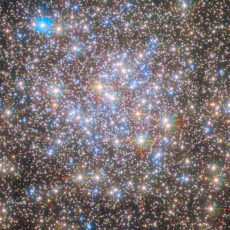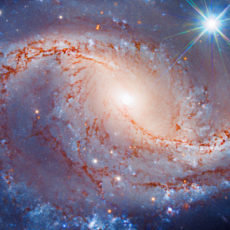
NASA / ESA’s Hubble Space Telescope recently observed a cosmic jellyfish located 800 million light-years from Earth. Classified as JW100, it lies in the constellation Pegasus and the tentacles you see are actually streams of star-forming gas dripping from the disk of the galaxy, formed by a process called ram pressure stripping.

What is ram pressure stripping? This phenomenon is the result of galaxies encountering the diffuse gas that pervades galaxy clusters. As galaxies fly through this tenuous gas, it serves as a headwind, stripping gas and dust from the galaxy, resulting in the trailing streamers that you see in JW100. Now the bright elliptical patches are actually other galaxies in the cluster that is home to JW100.
- LEGO NASA Space Set - This adult LEGO set features the Space Shuttle Discovery and the Hubble Space Telescope from NASA’s 1990 STS-31 mission,...
- Solar System Exploration - Unlock the mysteries of our solar system with this engaging 2,354-piece project, packed with authentic details and...
- Shuttle Features Galore - The space shuttle model has an opening payload bay, retractable landing gear, opening cockpit, moving elevons, space arm,...
This observation took advantage of Hubble’s Wide Field Camera 3 and its capabilities. The data is part of a sequence of observations designed to explore star formation in the tendrils of jellyfish galaxies. These tendrils represent star formation under extreme conditions and could help astronomers better understand the process of star formation elsewhere in the universe,” said NASA.







